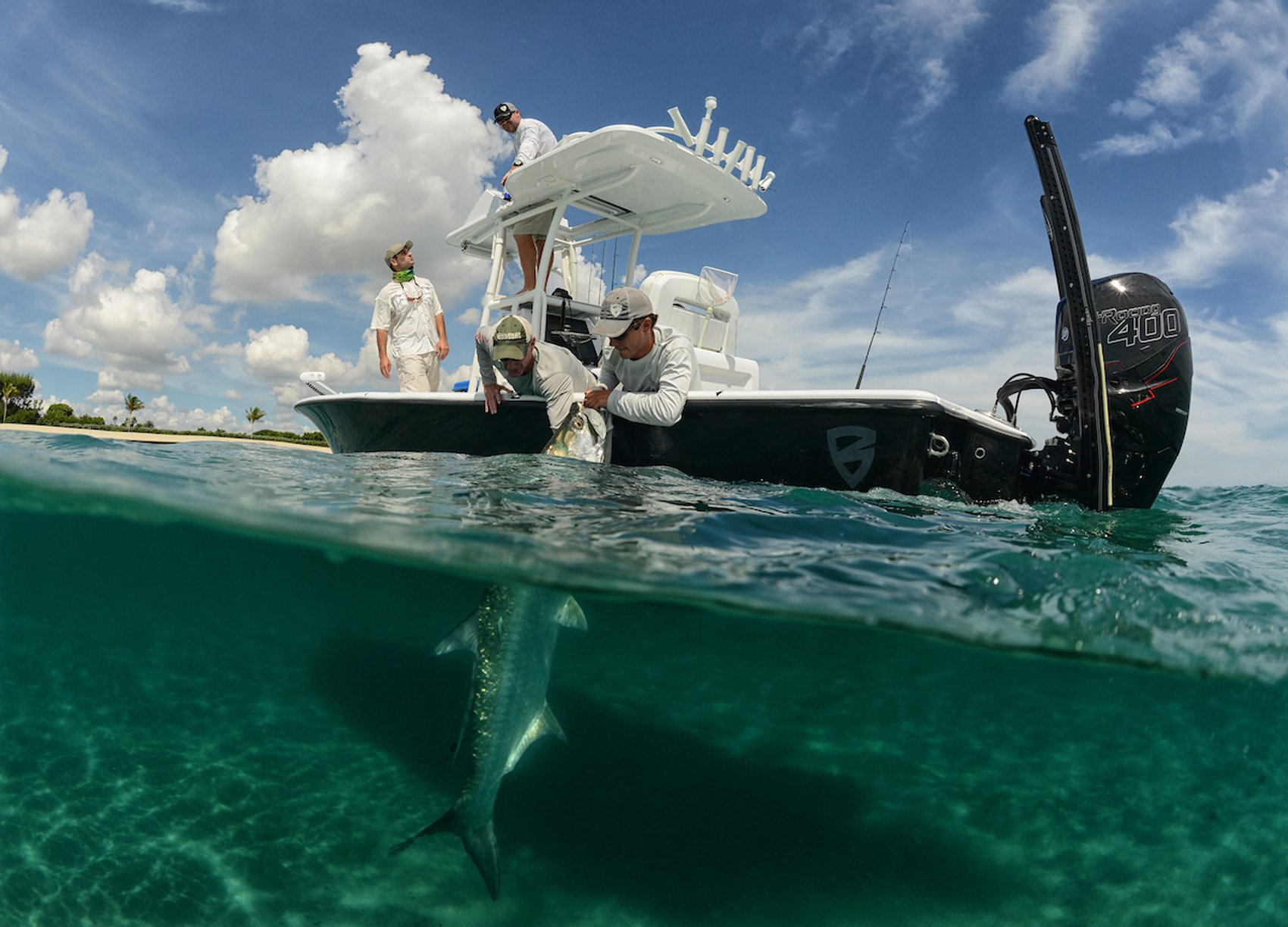Catch and release fishing is one way to conserve native fish species. When this practice is in effect, anglers carefully and immediately return the fish according to requirements of size and species to the water where it was caught. Fishermen also catch and release if they choose not to keep the fish. When done correctly, catch and release methods result in high survival rates. But catching and releasing fish successfully takes practice. You’ll want to minimize stress and injury to the fish.
Water Conditions
Avoid fishing when conditions are stressful for the fish:
- Extreme low flows
- High water temperatures
Instead, sit on the bank and enjoy watching the fish and your surroundings. You’ll be preserving fish and fishing for the future.
Fishing Tackle
The most crucial aspect of successful catch and release fishing is using appropriate fishing methods and gear for the size and species of fish you’re pursuing. The right tools for the job decrease the fish’s stress and increase its chance of survival after release.
- Rod, reel, and line – Use equipment with sufficient power and strength to land the fish quickly. Long struggles on light fishing gear can tire and stress fish unnecessarily.
- Bait – Using bait often results in deep hooking injuries. If possible, avoid the use of scents and artificial baits that encourage fish to swallow hooks. Note: Possessing or using live or dead minnows or other baitfish, amphibians, non-preserved fish eggs or fish roe is prohibited in freshwaters within national parks, except in specially designated waters. Consult the fishing regulations before using bait in national parks.
- Artificial lures or flies – When you use artificial lures or flies, the fish are generally hooked in the lip, making it easier to remove the hook quickly.
- Single, barbless hooks – Properly sized, single barbless hooks reduce fish handling time and injury. Two hooks can be removed from treble hooks using wire snips or pliers. Barbs can be removed by flattening the barb against the hook shank with needle-nosed pliers or fishing hemostats.
Catching and Landing the Fish
It takes time and practice to perfect the art of catching and landing the fish. Follow this advice to hone your techniques.
- Stay close. National Park Service fishing regulations require anglers to attend their rod or line closely. When you’re alert and nearby, you significantly reduce the opportunity for fish to swallow hooks deeply.
- Be quick. A tired fish takes longer to recover. Avoid playing the fish to exhaustion and land it as quickly as possible. Then, release the fish quickly.
- Use a landing net. Landing nets reduce handling time, stress, and the potential for injury, especially for large fish that are difficult to manage. Large frames with shallow nets made of rubber or small, soft, knotless mesh are best.
Handling Your Catch
Be sure to handle fish carefully to avoid injuries.
- Keep the fish wet and calm. Removing fish from water causes stress, suffocation, and possible internal injury.
- Provide proper support. Avoid removing fish from the support of the surrounding water any more than necessary. Support the fish in a landing net, or cradle the fish gently with one hand beneath the belly near the water surface.
- Treat the fish gently. Avoid squeezing tightly, which can damage internal organs and muscle tissue. Remember never to hold a fish by the gills.
- Use wet hands or gloves to handle fish. Wet hands or gloves will help reduce the loss of a fish’s protective mucus.
Removing the Hook
- Work quickly and calmly. Keep the fish in the water or hold it upside down to calm and relax the fish. This will make it easier to remove the hook.
- Use the right tool. Needle-nosed pliers, hemostats, and other hook removers are essential for quick and efficient hook removal.
- If necessary, leave the hook! If the fish is hooked deeply or the hook cannot be easily removed, then leave it. Cut your line as close to the hook as possible.
Releasing Your Fish
Let the fish fully recover before releasing it. Hold the fish underwater, in an upright position or secured in the landing net. Make sure it’s ventilating before release—you should see the gills opening and closing. If the fish has difficulty regaining its strength, then face the fish into the current. The fresh oxygenated water can pass gently over the gills helping the fish “catch its breath.” Let it swim away on its own.
In fast-moving water, consider moving the fish to calmer water where it can recover and swim away on its own. Fast-moving or turbulent water can sweep away or injure a weakened fish. This is particularly important for fish released from a boat in midstream.
Releasing Fish Caught in Deep Water
When a fish is caught from deep water and brought to the surface, gases dissolved in the blood come out of solution and cause the swim bladder to expand. The damage and stress that results are called “barotrauma.” A fish can often survive this event if it’s treated and released properly. When releasing fish caught at depth, know the correct procedure.
Courtesy: nps.gov























